All about the correct pruning of grapes
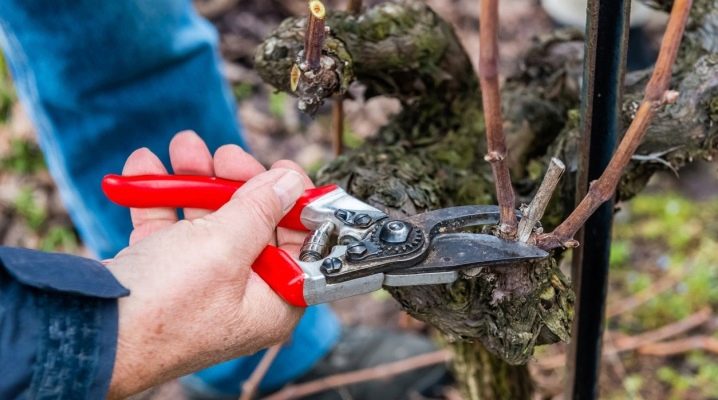
Correct pruning of the vine is the key to a good harvest and normal growth of the grape bush. Many inexperienced growers do not know what pruning is and how to properly carry it out.
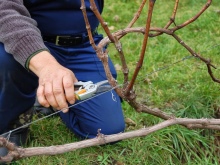
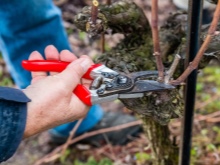
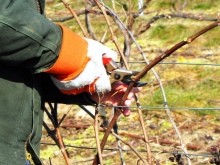
What is cropping?
Pruning refers to actions that are carried out in order to shorten or remove one-year-old shoots, as well as two- and three-year-olds as needed, and form the desired shape of the grape bush.
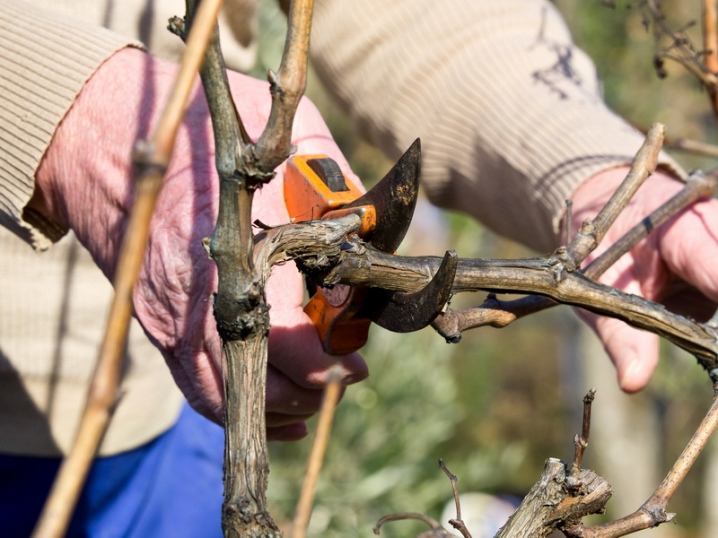
In different age periods of grapes, pruning has its own characteristics.
- Young bushes are considered 3 to 5 years old. Pruning of these grapes begins from the first year of planting. Its main goal is to form the main sleeve of the bush.
- Adults fruiting plants are pruned annually to shape the bush and to increase yields.
- Old the plants are pruned to prolong the fruiting period. In this case, a shorter pruning is carried out than in previous periods.
- In autumn, pruning of vines can be started after harvest, after 10-14 days. During this time, the plant will have time to recover its strength after fruiting.

It is worth paying attention to the recommendations for autumn pruning.
The vine should be cut to live wood - you can easily recognize it by its light green color, you must make sure that 1.5-2 cm of the shoot remains above the bud. Pruning times depend on the region where the grapes are grown and on the weather conditions.
First, a preliminary pruning of the vine is carried out. During this period, green shoots are removed, which are fully ripe. They can be identified by their green tint. Shoots that have a dark brown or brown tint cannot be touched, this may further negatively affect the growth of the bush and its yield.
Most often, this procedure is carried out in the first decade of October.
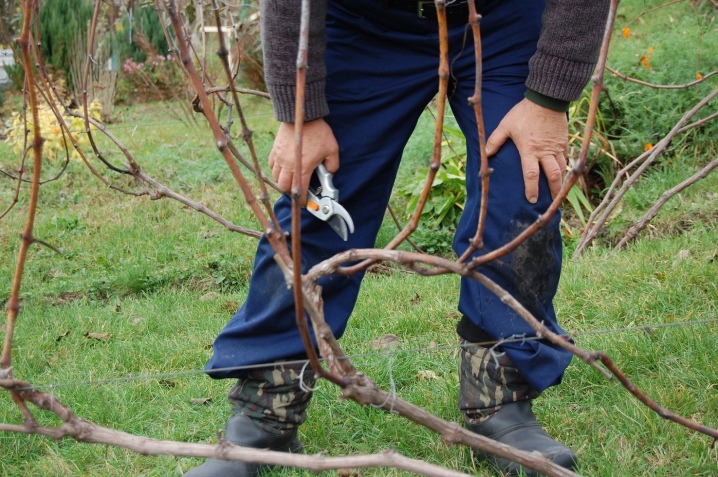
A little later, around the third decade of October, the main pruning of the vine is carried out. After careful examination of the culture, thin, dry, and also unripe shoots are removed.
Growers distinguish three main types of pruning:
- sanitary or restorative - it is carried out in the spring, at this time diseased, damaged, as well as branches frozen over the winter are removed;
- anti-aging pruning it is mainly carried out in the fall, when the first signs appear that the vine is old, in this case, either individual shoots are cut off, or the bush is completely removed, leaving 15-20 cm of the main skeleton on the surface of the earth;
- formative pruning begin to carry out already on a two-year-old bush.
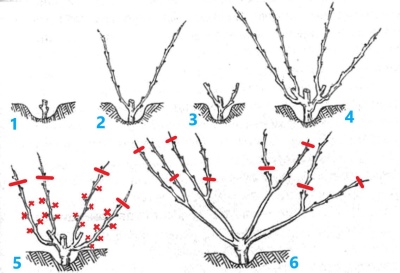
Correct pruning technique:
- from 7 to 12 eyes are left on the vine;
- one-year-old shoots are cut off at the very base, leaving a small stump of about 1 cm;
- the cut angle should correspond to 90 degrees, in this case the wound will heal faster;
- all sick, weak and deformed shoots must be removed;
- it is recommended to leave only the vine with an average diameter of 6-7 cm.
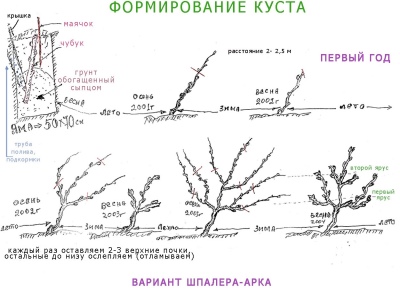
Pruning vines is a pretty serious procedure.which can stress grapes. To avoid this situation after pruning, you need to follow some agrotechnical rules for caring for the plant:
- it is imperative to remove the young growth, since it grows quickly, and the vine can overlap very strongly, this will lead to thickening of the bush, then to diseases, lack of sunlight and a drop in yield;
- it is imperative to loosen the soil near the bushes - this will provide oxygen access to the root system;
- also necessary do not forget about the treatment of plants from diseases and pests;
- timely and correct feed and water the plant;
- in the zone of risky farming, where the sun is for a very short time, it is necessary to remove large leaves that block the berries from the sun and slow down the ripening of the fruit.
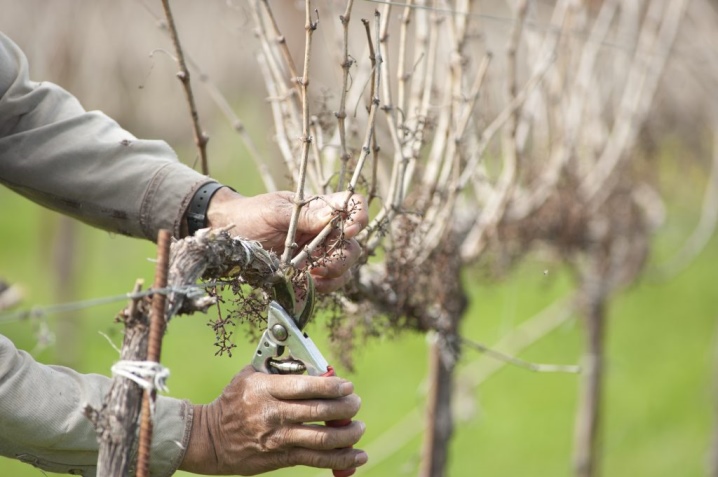
Forming methods
For a long time growing grapes, gardeners have developed various schemes and methods for forming a bush. This mainly depends on the characteristics of the variety and on the weather and climatic conditions of the region where the grapes are grown.
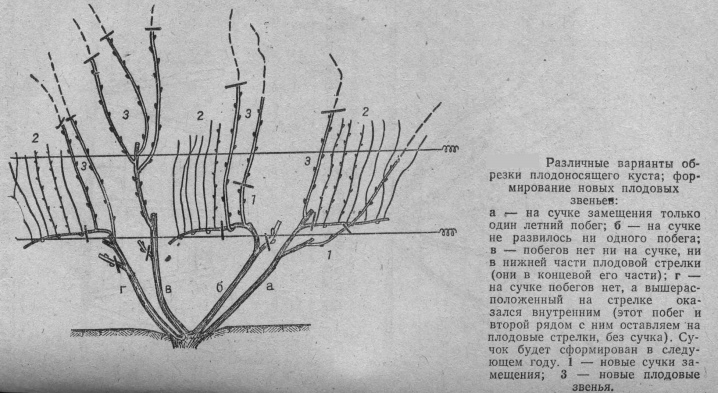
Fan
This method of forming a bush differs in that the plant has several arms, that is, several perennial shoots extend from the trunk.
The length of the sleeves can vary, so there are different long-arm fans (they can be from 60 to 100 cm) and short-arm fans (their height is from 30 to 40 cm).
Short-sleeved fans are much less common as they are mainly used in low-lying areas. Long-arm fans are much more popular, they are very often used in the design of gazebos, arches and pergolas.
The sleeves on the bush can go either in one direction or in both directions.
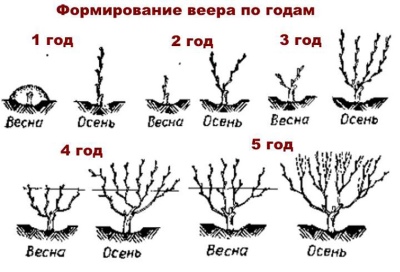
For covering grape varieties, a one-sided plant formation scheme is most often used, which greatly facilitates the covering process. The number of sleeves should not exceed three to four pieces.
There are different schemes for the formation of sleeves.
The one-sided long-sleeved scheme was developed by Sh. N. Guseinov. Most often it is formed in three tiers. The punch fan is also a very popular method of pruning; this scheme is used in regions with favorable climatic conditions. Bushes formed by this method are problematic to cover for the winter.
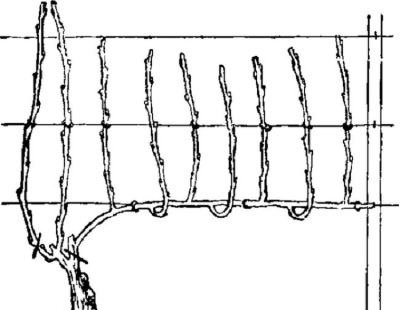
Step-by-step instructions for the formation of a grape culture using the fan method:
- during the first growing season in spring young grapes are not pruned, in the fall they choose the strongest of the shoots and cut off the top of it, leaving from 2 to 4 buds on it;
- during the second vegetation two young formed shoots are cut off: 2-3 buds are left on one of them, the second will be long, so that clusters form on it;
- in the third growing year sleeves begin to form, their number will depend on the number of strong shoots, the rest of the shoot needs to be tied to the lowest crossbar.
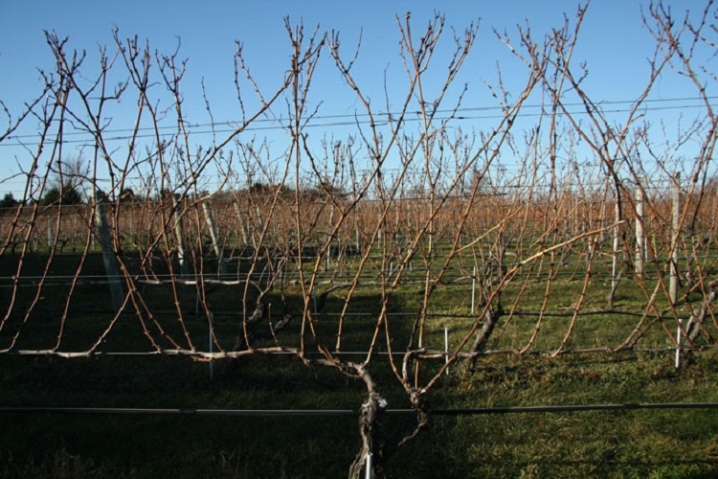
Shoots are also pruned the next spring.
Internal shoots should be made shorter than external ones.
For fruiting, links are created, for this, the lower base must be cut into two eyes, and the upper vine is cut into 5-6 eyes.
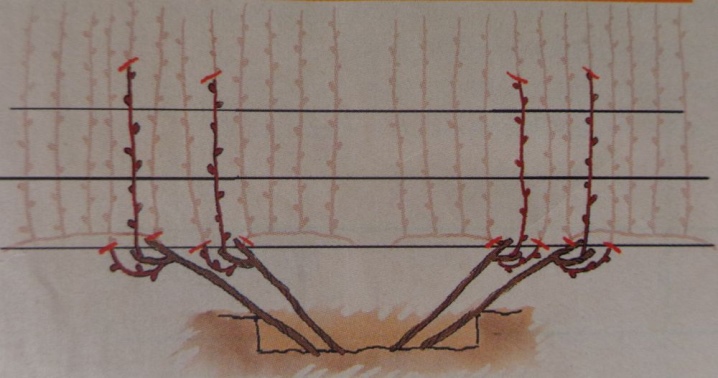
Cordon
The cordon method of vine formation is carried out mainly on high boles and is used in those regions where the grapes do not require shelter. The main feature of this scheme is that the formation of cordons takes place over several years.
Cordons are shoots that look like elongated cords and hang down under their own weight.
The options for such a formation may be different:
- on a high trunk;
- reverse cordon;
- vertical cordon;
- bowl;
- ray form and others.
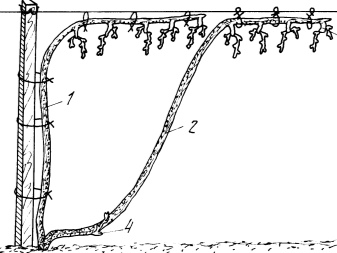

Gazebo
The gazebo method involves the growth of a bush around the perimeter of the entire area of the gazebo. In this case, the fruit links are equally distributed over the support. Such bushes have a lot of wood, so it is much more convenient and easier to care for them. The vine formed by the arbor method is easier to lay on the ground and cover.
The most popular shaping is a standard four-arm fan.
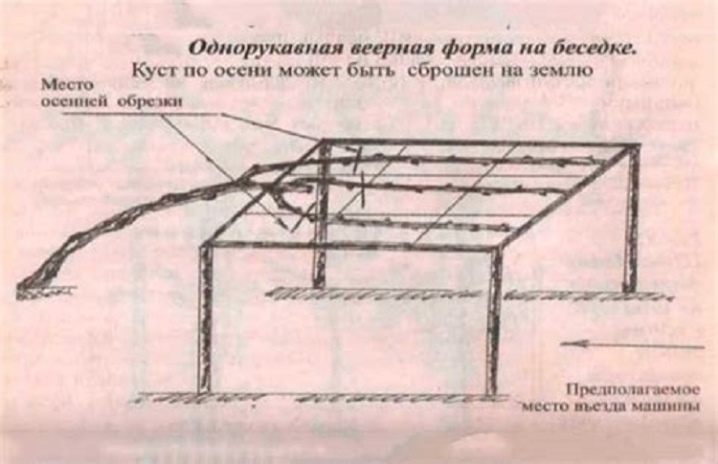
This method of forming a bush is considered one of the easiest and fastest for novice winegrowers. With proper agrotechnical care, the crop gives a high yield after three growing seasons. Such bushes have from 4 to 6 sleeves, their length ranges from 40 to 65 cm or more. The shape of the grape bush resembles a fan. In this method, one or two branches are left for replacement.
In order for the four-armed grape bush to be properly formed, it needs to be trimmed properly for the first few years. Let's analyze step by step the basic rules for pruning during this period.
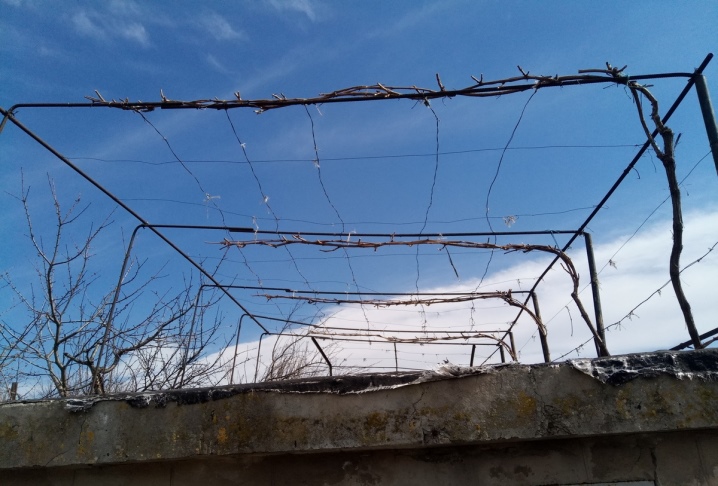
First vegetation
The main task of this period is to grow two well-developed shoots on a young grape bush.
In the spring of the first year, when planting a seedling at ground level, the last peephole must be left, everything else must be removed.
Agrotechnical care during this period must meet the following requirements.
- Watering... After planting, the seedling must be watered 2 more times, the break between watering should not exceed 10-14 days. One bush will need 3-4 buckets of cold water. Watering the grapes during this period is imperative, even if it rains. Further watering is done as needed. It is advisable to do the last watering during the first growing season in the first decade of August. Watering later, negatively affects the ripening of the vine.
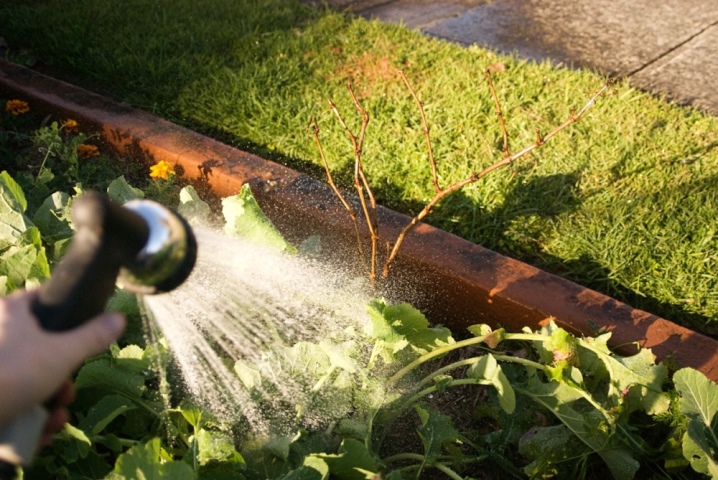
- Removing unnecessary shoots. As mentioned earlier, during the first growing season, the task is to grow two good shoots. Sometimes it happens that 2-3 eyes can give a lot of shoots, if they are not removed in time, the grapes will look like a broom. From the grown shoots, you need to leave the 2 most successful ones, the remaining shoots are removed when they reach a length of 3-5 cm.

- In September, it is necessary to carry out minting, as well as monitor the appearance of stepchildren, and if their number is exceeded, then there is a need to remove them... In the same month, the developing abandoned vines are attached to the support.
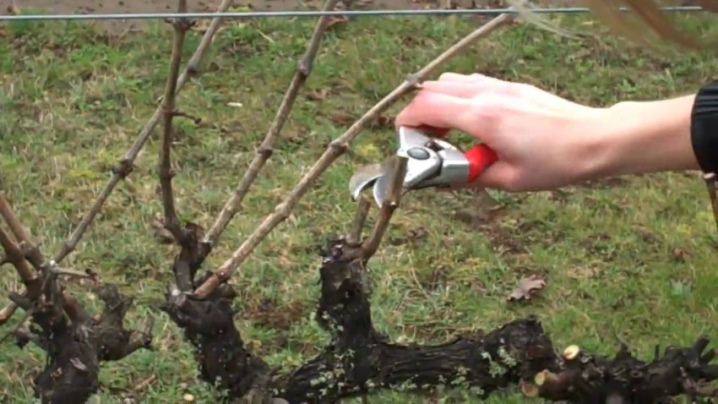
- Pruning of the vine is carried out at the end of October, and in some regions - in November, leaving 3 buds on the shoot... Then the plant is prepared for shelter for the winter - a cap is made from plastic bottles and young grapes are covered with it. After that, the grapes are watered and covered with peat, sawdust or pine needles. Some people use the land for these purposes. It is recommended to make a mound over the head of the bush to a height of about 25 cm.
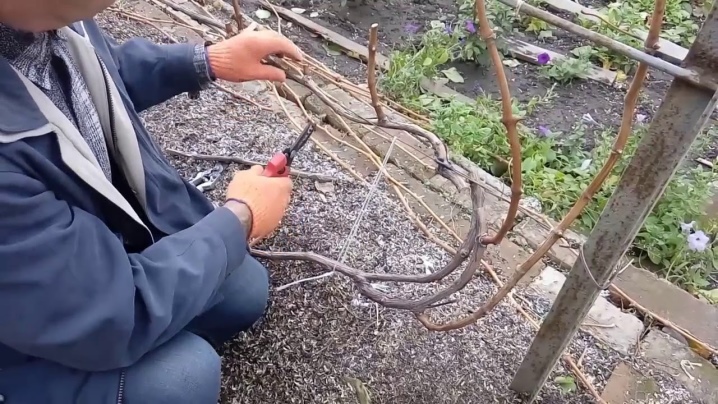
Second vegetation
The task is to grow four well-developed shoots, they will become the main arms.
At the height of the lower wire attached to the support, the thickness of the formed vine should be about 8 mm. Mature branches of the vine are easily recognizable by their characteristic crackle when bent and bright color.
An unripe vine is cold to the touch and lacks elasticity.
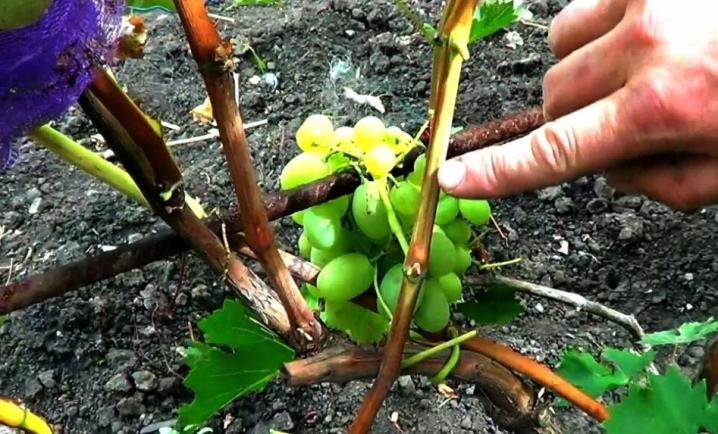
The main work carried out during the second growing season.
- In the second decade of April, the grape bush is supposed to open... Last year's hole above the bush needs to be restored. This is necessary in order for the root system to strengthen and further develop in the lower horizons. If you need a short cut, this will be much easier. In the future, this will facilitate the process of sheltering the plant for the winter.
- In order for the main shoots to develop well, stepchildren must be removed on them during the entire period of the second growing season. This will help protect the sleeves from cutting wounds.
- In the third decade of August, the growth of shoots usually slows down, this is the most suitable time for chasing shoots... The top of the shoot is cut to the first well-developed leaf. Determining the right time for this procedure is easy - when growth slows down, the upper part of the shoot straightens.
- Foliar dressing is good during this growing season.... They are held once a week. Pruning is recommended two weeks after the first frost or at the end of October. To do this, the sleeves must be tilted to the lower wire (angle of inclination 45) and cut the vine at a height of 15 cm. With the second sleeve, the same actions are carried out, but the trim is done at a height of 21 cm.
- Shelter follows the same pattern.as in the first growing year.
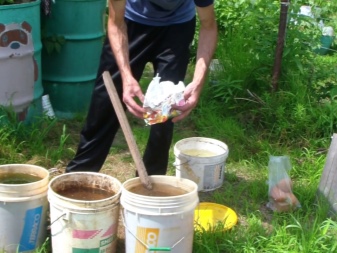
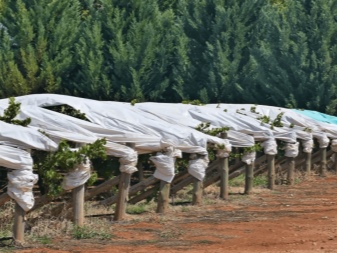
Third vegetation
The main goal of the third growing season is to grow two vines on each arm.
- After the winter opening, the vine must be tied to the bottom wire of the trellis... The shoots should be placed in a fan shape, the angle of inclination is approximately 40-45 degrees.
- At the time of the beginning of the growth of young shoots, it is recommended to leave no more than three shoots on each sleeve, the lower shoots are removed. Throughout the entire period, all new shoots must also be broken off. The formed sleeves should remain “bare” up to the bottom wire of the trellis. Thus, during the first growing season, 8 to 12 shoots should grow.
- In this growing season, the first fruiting begins. In order not to overload the plant, it is recommended to leave one bunch on the shoots.
- It was during this period that the process of formation of the fruit link begins.... In the third decade of October, the lower ripe vine on the sleeve is cut shortly, leaving only three or four buds. This will become the future replacement knot, which will be located on the outside. The second vine should be cut into no more than 6 buds. This will later become a fruit arrow.
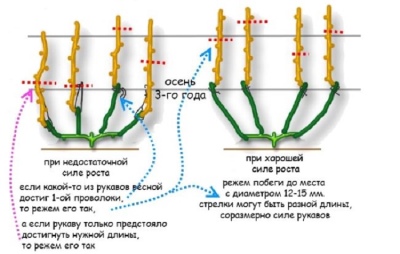
Fourth vegetation
If the gardener did not have any problems during the three previous stages, then by the beginning of the current growing season the plant will have the desired shape.
After the winter opening, it is advisable to tie up the grapes.
Sleeves are tied at an angle of 40-45 to the bottom wire. During fruiting, as in the previous period, the bush should not be overloaded. In the fall, carry out classic pruning, following the recommendations of the second growing season.
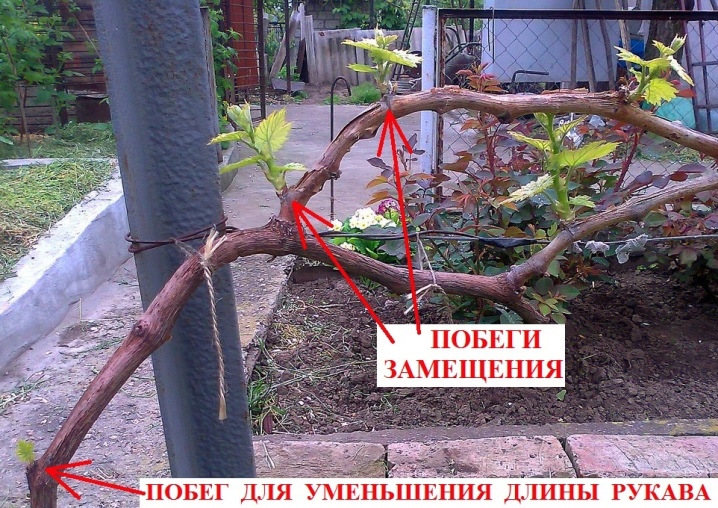
We take into account the climate and season
Very often, growers wonder when is the best time to prune - in spring or autumn. The most optimal time for this procedure is autumn. This can be explained by several reasons that are the pluses of autumn pruning:
- many grape varieties require shelter for the winter, and a pruned vine makes this process easier;
- after the autumn pruning, the "wounds" of grapes heal much faster, in the future this affects the good fruiting of the bush.

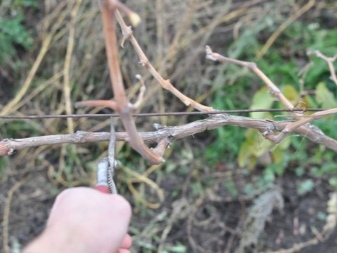
In the spring, pruning is also carried out, but this is already associated with some risks. Spring pruning is dangerous because sap flow has begun and together with the juice, trace elements and nutrients necessary for plants will come out of the "wound".
Spring pruning is recommended only on those bushes that are not older than 3 years.
Very often this is dangerous for the bush because the vine can dry out and in the future the grapes can completely die.... If you prune a plant that is more than 3 years old, kidney acidification may occur. From this we can conclude that the best time for pruning grapes is autumn, since with the cessation of sap flow, many negative consequences can be avoided.
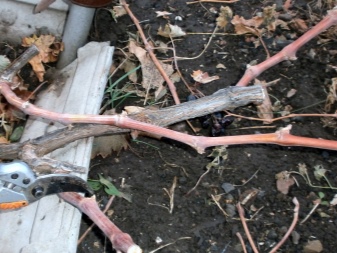
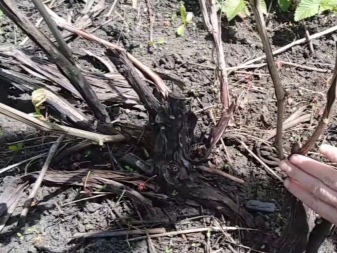
Anyway, so that the bushes do not suffer, they must be properly cut. A regular pruner is used to trim young bushes. For too neglected grapes, either a hacksaw or a pruner is most often used, which is designed specifically to remove branches from trees. In order not to infect the plant with any disease during pruning, the tools must be disinfected and sharpened well.
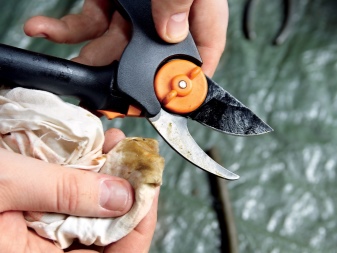
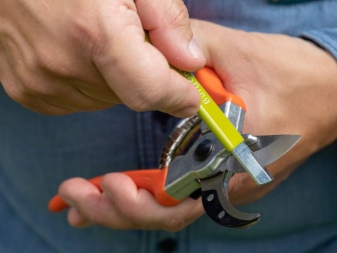
Autumn pruning is carried out in order to preserve and give the desired shape to the bush, remove old, fertile vines, assess and improve the general condition of the plant.
In the summer, diseased shoots are most often cut off.
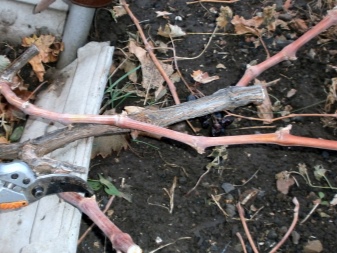
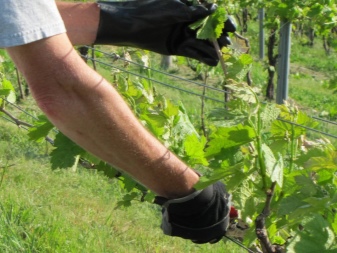
Attention - to the variety
During the formation of the bush, attention must be paid to the plant variety. Not every variety will work well with different shaping methods.
It is also necessary to know and take into account the normalization of the number of shoots.
Many young growers, in order to get a bountiful harvest, leave a lot of growth on the bush, this becomes their main mistake.
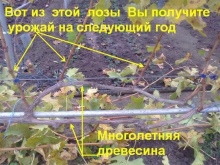
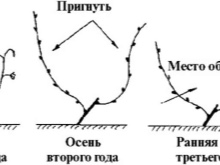
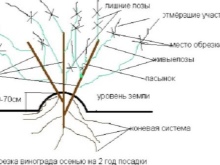
Crying vine
The cry of grapes is the flow of juice from the cuts and wounds. Leakage of sap in spring is quite normal. This indicates that the bush is alive. The amount of sap often depends on the size of the bush and the development of the root system. The average duration of the juice flowing process lasts about 25-30 days.
In order for the plant not to lose a lot of life-giving moisture, pruning must be carried out correctly.
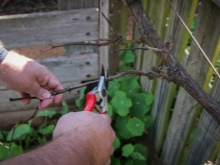
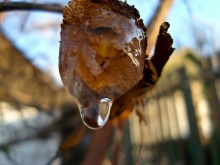
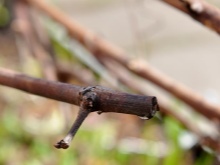










The comment was sent successfully.